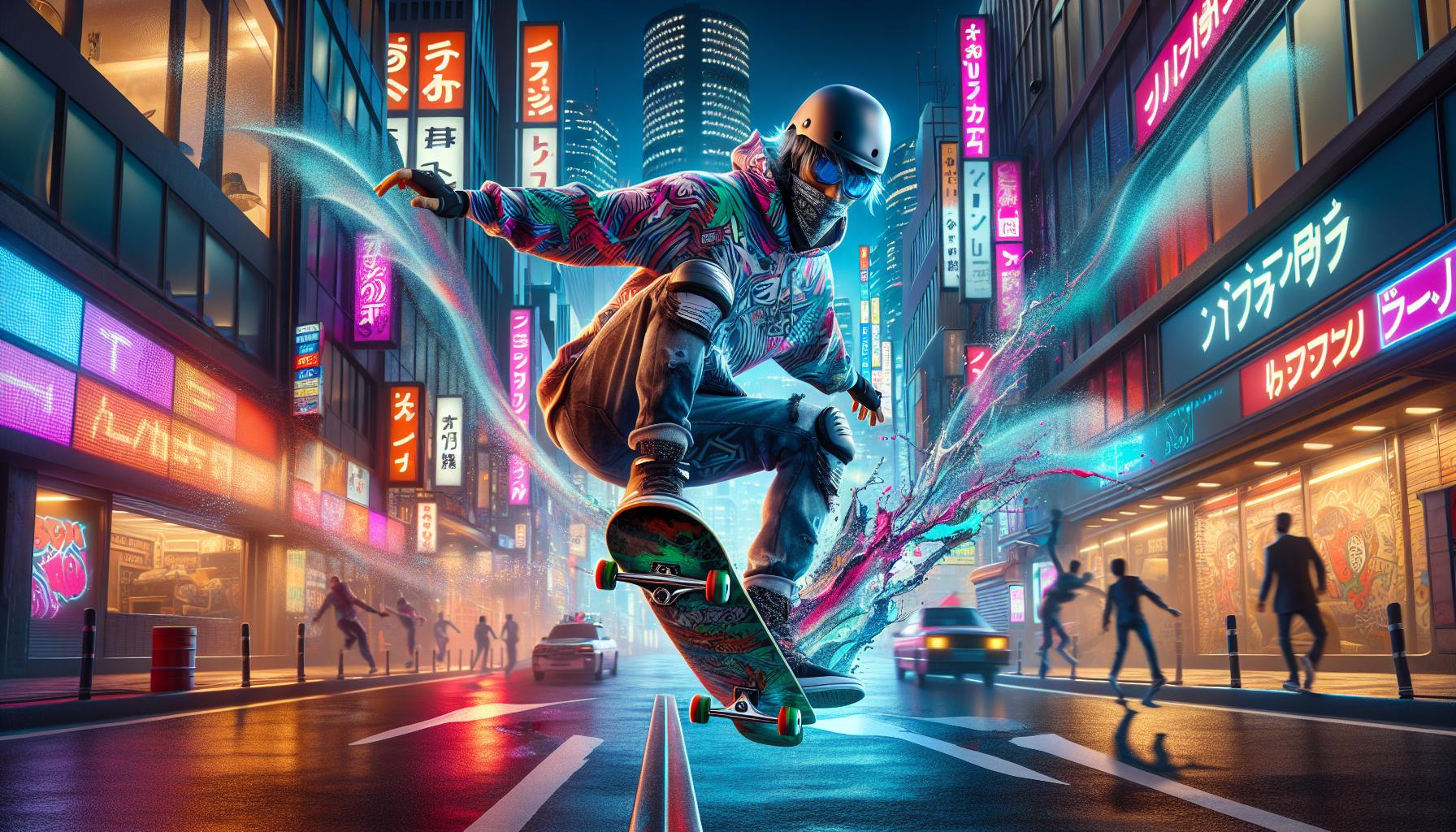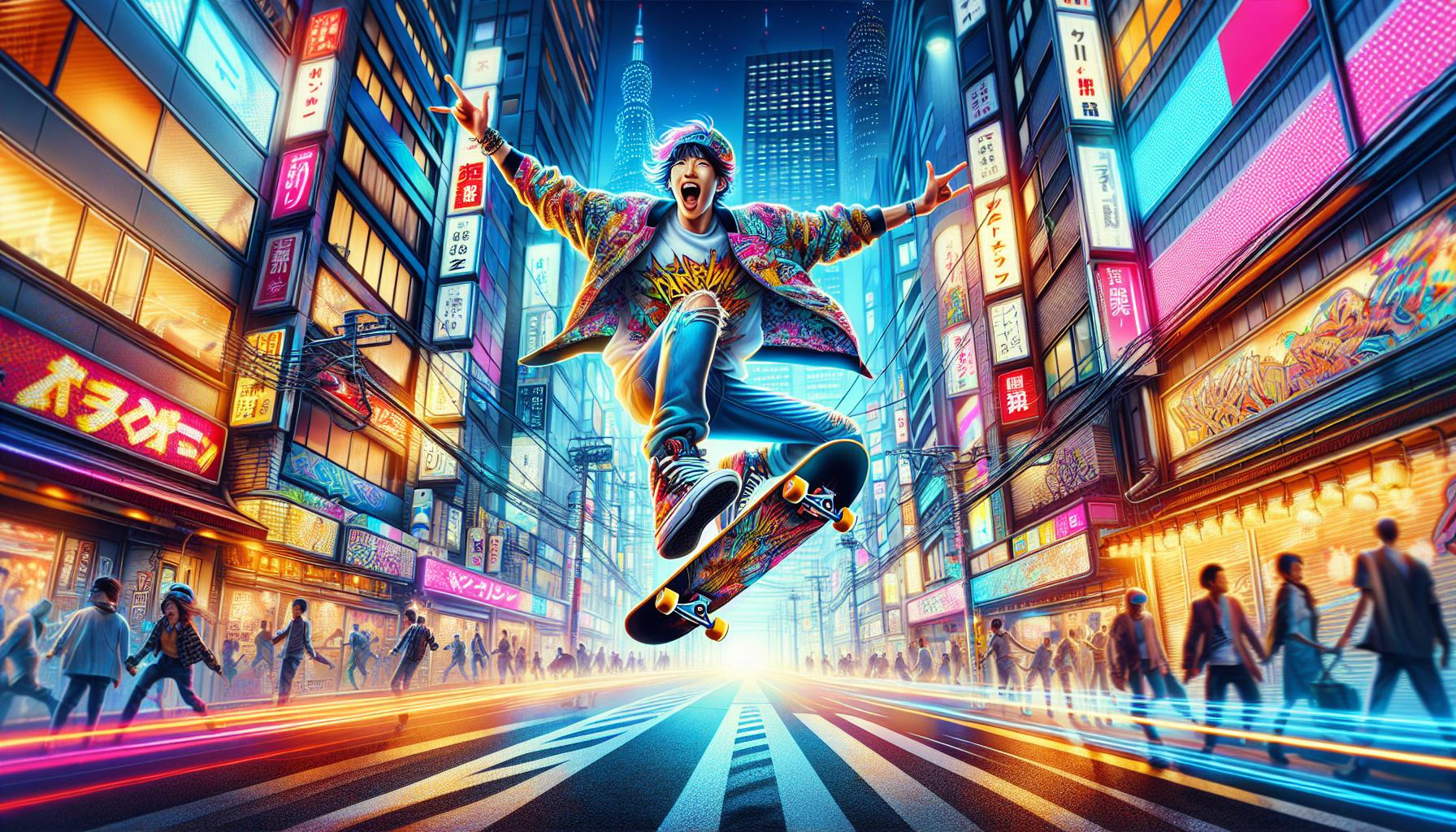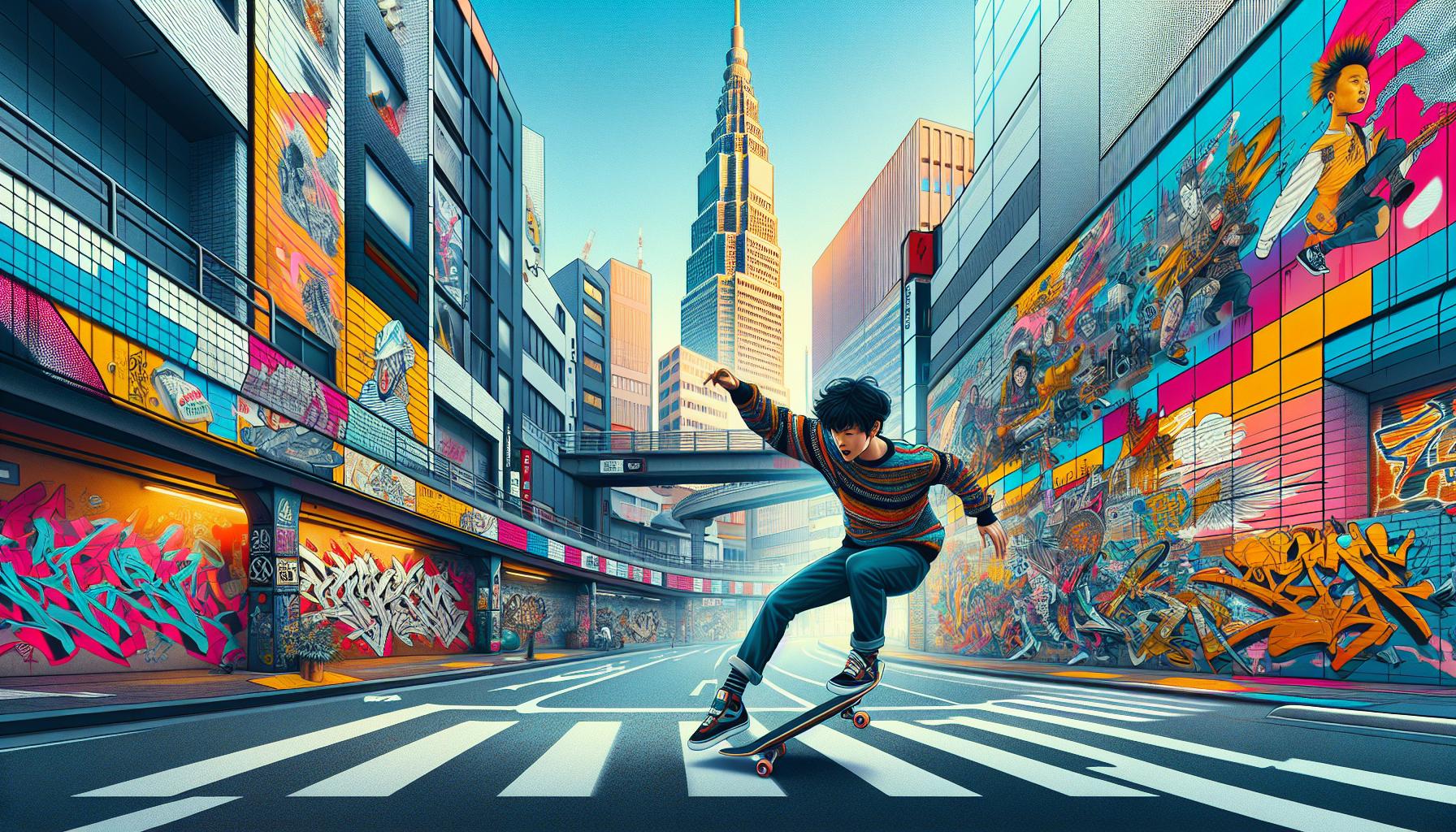Nostalgic gamers rejoice! The streets of Tokyo-to might soon be painted with fresh graffiti as rumors swirl about a potential Jet Set Radio reboot. This beloved Sega classic, known for its rebellious spirit and funky soundtrack, has left an indelible mark on gaming culture since its Dreamcast debut in 2000.
Two decades later, fans are buzzing with excitement as industry insiders hint at a modern reimagining of the cel-shaded masterpiece. With today’s advanced graphics capabilities and motion controls, a new generation of players could soon be grinding rails and tagging walls while dodging Captain Onishima’s relentless pursuit. Whether it’s just wishful thinking or a real possibility, the gaming community can’t help but dream about pulling off sick tricks with the GGs once again.
The Legacy of Jet Set Radio
Jet Set Radio’s revolutionary blend of cel-shaded graphics, urban culture, and anti-establishment themes created a lasting impact on gaming history. The game’s distinct visual style and rebellious spirit continue to influence modern game design two decades after its initial release.
Impact on Gaming Culture
Jet Set Radio pioneered cel-shaded graphics in video games, inspiring countless titles like The Legend of Zelda: Wind Waker, Borderlands and XIII. The game’s unique soundtrack, featuring original tracks by composer Hideki Naganuma, established a new standard for music integration in gaming. Its fluid movement system revolutionized action-sports games, combining skating mechanics with creative expression through graffiti art. The character designs by Ryuta Ueda influenced character art across various media platforms, from anime to street fashion collections.
Cultural Significance
Jet Set Radio challenged social norms by addressing themes of youth rebellion, corporate control and artistic freedom. The game’s representation of street culture resonated with global audiences, transcending traditional gaming demographics. Its portrayal of Tokyo’s underground scene introduced Western audiences to Japanese youth culture elements like street fashion, graffiti art and electronic music. The game’s anti-authoritarian message sparked discussions about freedom of expression in digital media. Major art galleries, including London’s Barbican Centre, featured Jet Set Radio in exhibitions exploring the intersection of gaming and contemporary art.
Why Jet Set Radio Needs a Modern Revival

The gaming industry’s evolution presents a perfect opportunity to revitalize the Jet Set Radio franchise. Modern gaming platforms offer enhanced capabilities to bring Tokyo-to’s vibrant world to life with unprecedented detail and immersion.
Current Gaming Landscape
The rise of creative expression games like Splatoon 3 and skateboarding titles such as OlliOlli World demonstrates a strong market demand for stylized action-sports experiences. Games focusing on urban culture resonate with Generation Z players through platforms like TikTok Instagram. The success of titles like Persona 5 highlights growing Western appreciation for Japanese street culture aesthetics. Current gaming trends emphasize self-expression customization player freedom elements that align perfectly with Jet Set Radio’s core mechanics.
Technical Possibilities
Modern gaming hardware enables dynamic cel-shaded graphics at 4K resolution 60 frames per second. Ray tracing technology creates realistic lighting effects for spray paint reflections neon-lit streets. Advanced motion controls through PlayStation 5’s DualSense Nintendo Switch’s Joy-Cons enable intuitive skating graffiti mechanics. Cloud computing allows for expansive open-world environments with zero loading times. Modern online features support competitive multiplayer modes community-created graffiti sharing real-time cooperative gameplay across global servers.
| Technical Enhancement | Benefit for JSR Reboot |
|---|---|
| 4K/60fps Support | Crystal clear cel-shading |
| Ray Tracing | Enhanced urban atmosphere |
| Motion Controls | Intuitive gameplay mechanics |
| Cloud Computing | Seamless open world |
| Online Features | Global community integration |
Potential Features for a Modern Reboot

A modern Jet Set Radio reboot presents opportunities to enhance the core gameplay mechanics while preserving the original’s distinctive charm. Current gaming technology enables innovative features that expand upon the classic formula.
Enhanced Movement System
The updated movement system incorporates advanced parkour mechanics with contextual controls for fluid traversal across Tokyo-to’s urban landscape. Players execute chain combos through precise button timing, linking grinds, wall rides, and aerials into seamless sequences. Motion-captured animations add weight and momentum to character movements, creating realistic physics interactions with environmental objects. The expanded trick system includes 75 unique moves, from basic ollies to complex rotational flips. Adaptive controls respond to surface types, adjusting player movement on surfaces like concrete, metal rails, or glass windows.
Next-Gen Graphics and Art Style
The reboot maintains Jet Set Radio’s iconic cel-shaded aesthetics while leveraging modern rendering techniques for enhanced visual fidelity. Dynamic lighting systems cast real-time shadows across detailed character models featuring 4K textures. Ray tracing technology creates realistic reflections on metallic surfaces, glass buildings, and wet streets. The art direction introduces vibrant neon effects, particle systems, and environmental reactions to graffiti tags. Character customization options include 200 clothing items, 50 spray can effects, and 25 unique character silhouettes. Environmental details showcase dense crowds, dynamic weather patterns, and interactive urban elements.
Preserving the Original Spirit
The essence of Jet Set Radio’s identity lies in its unique combination of music, art and counter-culture elements. A successful reboot maintains these core aspects while enhancing them with modern technology.
Music and Sound Design
The iconic soundtrack features dynamic compositions that blend hip-hop, funk, electronic and J-pop genres. Original composer Hideki Naganuma’s distinct musical style sets the rhythm for grinding rails and tagging walls. Modern audio processing enables spatial sound design with 3D positional audio, creating immersive environments where music shifts based on player location. The soundtrack incorporates contemporary artists who complement the original style while introducing fresh beats that resonate with new audiences.
Street Culture Elements
The game’s street art authenticity comes from collaborations with real graffiti artists who design in-game tags and murals. Character customization options reflect genuine street fashion from global urban centers like Tokyo, New York and London. Environmental details showcase authentic street culture elements including breakdancing spots, DJ setups and skateboard hangouts. The visual style maintains the original’s mix of Japanese and Western street art influences while adding modern urban culture references that connect with today’s audiences.
Challenges of Rebooting a Classic
Modernizing Jet Set Radio presents significant technical hurdles in balancing nostalgia with contemporary gaming standards. The cel-shaded art style demands precise optimization to maintain its iconic look at 4K resolutions while incorporating modern lighting effects.
Control schemes pose a complex challenge due to the original’s unique movement system. Adapting the skating mechanics for current-generation hardware requires preserving the arcade feel while implementing more precise input methods.
Music licensing creates substantial barriers for a modern reboot. The original soundtrack featured 29 distinctive tracks from various artists, making rights acquisition a complex legal process in today’s streaming era.
Here are the key technical obstacles:
- Maintaining 60 FPS performance with enhanced visuals
- Implementing responsive controls across multiple platforms
- Creating large scale environments with zero loading times
- Balancing physics systems for both casual players and experts
Cultural authenticity represents another critical challenge. The original game captured a specific moment in street culture that requires careful updating:
- Representing modern graffiti art styles authentically
- Incorporating contemporary street fashion trends
- Adapting youth counterculture themes for today’s audience
- Preserving Japanese cultural elements while appealing globally
Competition from established franchises adds market pressure. Skateboarding games like Tony Hawk’s Pro Skater 1+2 have set high standards for remakes, while titles such as Splatoon 3 dominate the territory marking genre.
Development costs create financial risks. Creating detailed open worlds, implementing advanced physics systems, and securing music rights require significant investment without guaranteed returns.
Conclusion
The potential return of Jet Set Radio stands as one of gaming’s most anticipated revivals. While technical and cultural challenges exist modern gaming technology offers unprecedented opportunities to reinvent this beloved franchise for a new generation.
A successful reboot would need to strike the perfect balance between nostalgia and innovation maintaining the original’s rebellious spirit while embracing contemporary gaming features. The combination of enhanced graphics fluid controls and expanded multiplayer capabilities could breathe new life into Tokyo-to’s vibrant world.
Whether these rumors materialize into reality remains uncertain. Yet the enduring legacy of Jet Set Radio proves there’s still tremendous appetite for its unique blend of style music and artistic expression in today’s gaming landscape.

